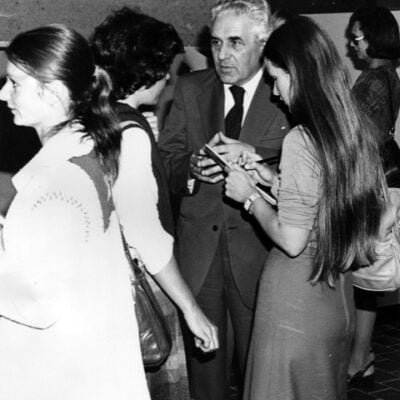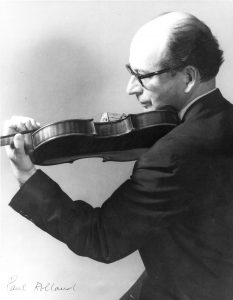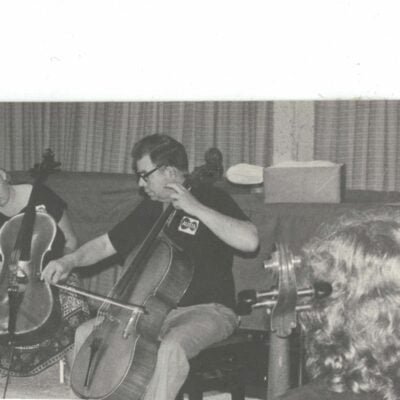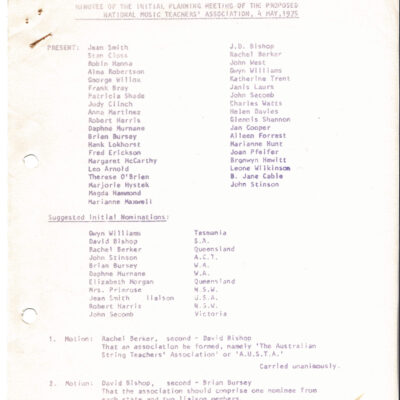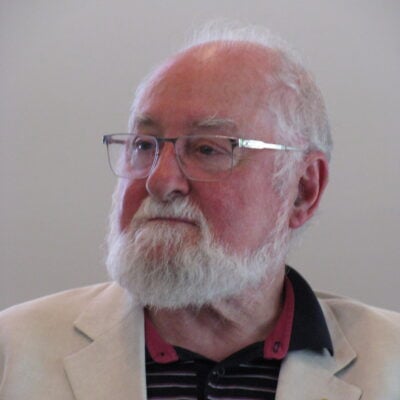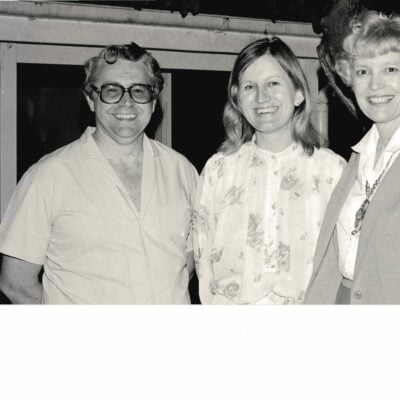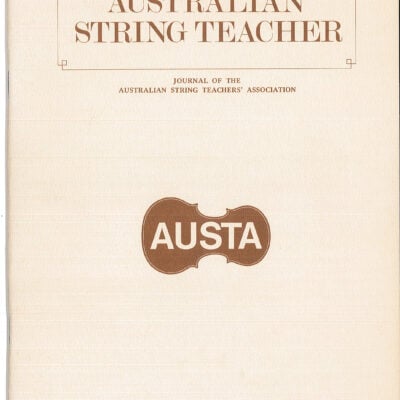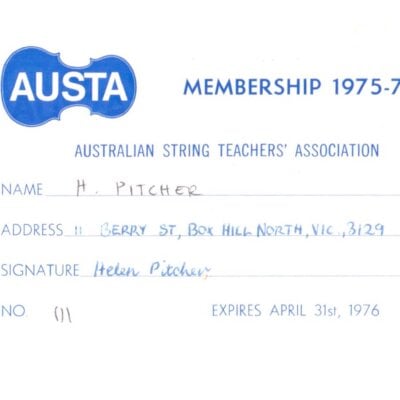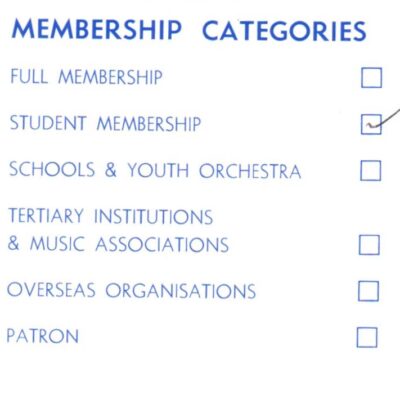Looking Back, Playing Forward
Welcome to The Soundboard, AUSTA’s new blog dedicated to amplifying the voices, stories, and ideas that shape our national strings community. In this first edition, we begin by looking back, playing forward—honouring our past as we move confidently into the future.
We’re proud to feature “Living Treasure: Elizabeth Morgan AM”, an article originally published in Stringendo, Vol. 48. Elizabeth Morgan AM stands as a pillar in AUSTA’s history—a visionary educator, leader, and advocate whose work helped establish the very foundations of our association. In this special interview, she reflects on the early days of AUSTA, sharing her memories of its formation, the spirit of collaboration that brought it to life, and the values that continue to resonate throughout our community today.
Her words are a powerful reminder of the legacy we inherit—and the importance of continuing to build, support, and inspire the next generation of string educators.
Living Treasure: Elizabeth Morgan AM
AUSTA Q State President Amy Phillips interviews AUSTA founder Elizabeth Morgan AM.
I was privileged to study all the pedagogy subjects with Elizabeth Morgan when I was undertaking my Bachelor of Music at the Queensland Conservatorium, Griffith University. Elizabeth continues to be one of my greatest influencers and inspirations, and it was an honour for me to talk with her about AUSTA, strings teaching and playing, on this special milestone year celebrating 50 years of AUSTA.
AP: What was your aim starting AUSTA?
EM: AUSTA was formed as a result of the First National String Seminar in 1975 at the Canberra College of Advanced Education which 71 string teachers attended. John Stinson OAM and I noted the sudden growth of string teaching around the country and the value of supporting new programs for teachers to be able to make informed choices. I was elected Inaugural President as a result of that seminar. It was an overwhelming and special opportunity handed to me to make something of, even though I had little idea of what that might be. From the formation of AUSTA, significant opportunities arose synchronistically. Our first aim was to keep members in touch across the country. At that time, early string teaching and playing were mostly undeveloped, particularly here in Queensland – no shoulder rests, a modest music shop (it had little string music in stock), barefoot children, no music in schools, you name it! Even head teachers in the schools appeared to not know what a violin was!
AP: Do you think your original dream [see AUSTA’s Mission Statement] has been fulfilled? If so, how?
EM: The organisation evolved as step by step we moved towards the first conference. Each state held their own events, not forgetting that this was the time before computers. It took us some years to afford a typewriter. An early landmark was the First National Conference at the University of Queensland, at which Paul Rolland, US co-author with Margaret Rowell of Teaching of Action in String Playing, was a guest presenter. A National Executive meeting was established to which state presidents came to Brisbane for the weekend to talk all things AUSTA. The development of friendships, connections and collegiality were so positive. Sharing of ideas was invaluable. It was fascinating to observe the widely contrasting characters of each state.
AP: Do you feel that the original spirit of AUSTA is still the same now?
EM: There will always be the need for string teachers to become curious to discover more ways to teach and to learn. It is a never-ending journey, particularly as there are few pedagogy courses in the country, let alone comprehensive ones. The value of self-questioning cannot be overestimated – to reconsider and seek out personal understanding. Our collective awareness about string teaching is at a higher level now. AUSTA’s state and national activities have contributed greatly as have the high number of fine performers and pedagogues brought to Australia by AUSTA. AUSTA will continue to add to this ongoing expansion of awareness. After all, learning is never-ending.
AP: Reflecting on 50 years of AUSTA, are there any particular people that had a major influence on you and/or the organisation?
EM: National Presidents who followed me each contributed greatly to consolidating the organisation in many ways. ASTA was an active support, writing about AUSTA in their Silver Jubilee journal. The educators visiting from Europe and USA opened our eyes to many new possibilities and gave of themselves and their experience generously. The Music Board gave AUSTA support enabling it to survive financially, to hold conferences and to tour teachers and performers to each state. There are a significant number of people who influenced AUSTA over the years and who dedicated themselves to making a difference – it is unfortunately impossible to name them all in this interview.
AP: Concerning your involvement with AUSTA, would you do anything differently? If so, what?
EM: Certainly! I would have delegated more and spread the workload in those exciting foundation years. I was simply surviving. Administration was done on the run, and often it was quicker to do it myself. There was always so much to be done – 2 am phone calls overseas, making sure presenters were informed, keeping an eye on my other projects, teaching at university and at home, being a member of a chamber group and handwriting letters as we did not even have a typewriter. That is not to suggest there were not a number of valued colleagues and friends who also contributed.
AP: Being able to adapt is important as a musician, pedagogu, and organisation. Would you be willing to comment on this and/or share your personal insight?
EM: There are often dramatic events, challenges or surprises. For example, when we brought cellist Christopher Bunting to Australia for the first conference, he arrived but his cello was not offloaded. It went on to Japan. A suitable cello was loaned for his recital the following day. A national airline strike was a nail-biting challenge before the first two conferences in Brisbane!
AP: Do you have any wise words for AUSTA members? A vision for the future of AUSTA?
EM: There are many creative, wise people out there prepared to take risks, who think big and who will be committed, who will make high level commitment, even if they don’t feel like going the extra miles that day. Don’t be afraid to step outside the box, and query what the longer-term effects may be of any action or values presented. String teaching is a high-order, special and privileged profession. One-to-one lessons can have a particularly powerful, long-term influence on students, sometimes at a deeper influence than we realise. Self-esteem and self-agency are essential ingredients for the long term. When the student is ready, the teacher appears; when the teacher is ready, the student appears. Every student teaches the teacher something different. We, the teachers, facilitate and learn; the student does too, but differently. Ego must never get in the way.
AP: What are your hopes or vision for the next 50 years of AUSTA?
EM: My dream, arguably unrealistic, would be to have every child introduced to music (and a stringed instrument!) as early as possible. Suzuki famously said that the unborn baby should experience wonderful music every day in utero and move to the violin at the earliest age. It is such an opportunity for the young child’s development, with immeasurable, essential benefits on so many levels, from playing basic notes in tune to brain development to the highest levels of transcendence.
As a teacher I am as guilty as anyone for using the judgement of “good” and “bad”. Can’t we rise above judgement? If playing is to be for more people, the joy of the music and sense of joyful collaboration that develops when friends get together to play, arguably makes the world a better place!
AP: Are there any other comments that you would like to share?
EM: The journey of string playing and teaching is one of increasing subtleties – a subtle journey. The bumps gradually become finer and finer, indefinitely. Mozart, Bach, Paganini et al, here we come.
Everyone who has contributed to AUSTA, in a large or small way, should take pride in having made a difference, leaving a legacy from which countless, unseen benefits are already flowing.

